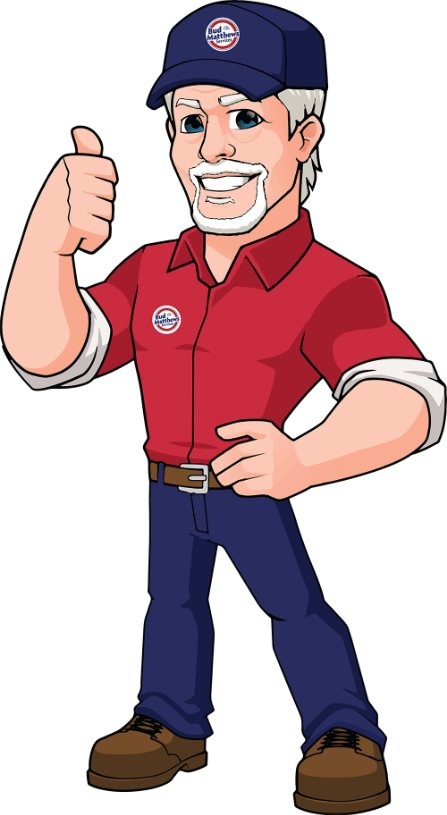
Colder temperatures are definitely upon us, and we’ve seen more than one frosty morning over the past two months. But it’s still not too late to winterize your home! Protecting your home against the elements—whether it’s freezing temperatures, excessive moisture, or extreme heat—is a Bud Matthews specialty.
To help you out, we made a list of our top five tips for winterizing your home. Hopefully, these tips will help you to avoid higher heating bills, busted pipes, and other cold weather mishaps!
Winterizing Tip #1: Disconnect Garden Hoses from Hose Bibs
During the winter months, disconnecting your garden hoses and accessories from hose bibs (spigots) will prevent freezing and bursting. Ironically, today’s modern “frost free” hose bibs will often burst when a device is left attached during freezing temperatures. Furthermore, it is sometimes difficult to know that a hose bib has burst. This is because a burst hose bib won’t actually leak until the hose bib is opened for use and even then, you will usually still get some water coming out as expected. By design, the actual valve is on the inside of the foundation wall so the leaking generally happens inside the crawlspace, basement, or wall itself. If you notice a loss of pressure and water flow, a hose bib has likely burst and should not be used again until a plumbing expert can get out to evaluate and replace the hose-bib.
Winterizing Tip #2: Install Storm Doors & Windows
If you don’t already have storm doors, this is a good time to install them. If you do have storm doors and windows but removed them in the spring, now is the time to put them back up. Storm doors and windows can help lower your heating bill by better insulating your home. They also protect your front door from ice, rain, and wind. Finally, installing storm doors and windows can help prevent break-ins by creating an extra barrier to entry.
Winterizing Tip #3: Clean Your Fireplace
Everyone loves a cozy, warm fire burning in the hearth during the winter months, but no one loves a smoke-filled home or, god forbid, an accidental fire. Before you start using your fireplace, you need to do some seasonal maintenance. First, sweep the chimney, and then inspect the damper to be sure it is working properly. You will also want to be sure that your chimney cap is doing its job of keeping unwanted debris out of the fireplace. If your fireplace needs repairs, be sure to have them done before you use the fireplace. When it comes to fire, safety should always come first!
Winterizing Tip #4: Prep Your Gutters for Winter
If you haven’t cleared your gutters since autumn’s leaf fall, be sure to do it before colder weather sets in. Clogged gutters can not only damage your roof, they can also cause water to flow heavily off your roof, possibly affecting your home’s foundation. If you live in a heavily wooded area, it’s worthwhile to consider installing gutter guards, which will reduce the frequency with which you need to clean out your gutters. If you don’t have the time or inclination to climb up on that ladder yourself, call Bud Matthews Services and we’ll be happy to set you up with a residential exterior maintenance plan.
Winterizing Tip #5: Maintain Your Furnace
To keep your family warm and cozy all season long, be sure to invest in the long term health of your furnace. Your furnace should be quiet, efficient, and effective. In other words, it should keep your house warm without excessive heating bills or noise. Much like scheduling annual check-ups with your doctor or a regular tune-up for your vehicle, preventative furnace maintenance can help you to prevent major problems down the line.
All of us at Bud Matthews wish our customers a safe and warm winter season!

